I am not sure if what i am trying to do is a valid practice but here it goes: I need my program to be highly parallelized so i thought i could make 2-3 processes and each process can have 2-3 threads.
1) Is this possible? 2) Is there any point into it? 3) This is my code but it hangs when i try to join the processes.
PQ = multiprocessing.Queue()
[...]
def node(self, files, PQ):
l1, l2 = self.splitList(files)
p1 = multiprocessing.Process(target=self.filePro, args=(l1,PQ,))
p2 = multiprocessing.Process(target=self.filePro, args=(l2,PQ,))
p1.daemon = True
p2.daemon = True
p1.start()
p2.start()
p1.join() # HANGS HERE
p2.join()
while 1:
if PQ.empty():
break
else:
print(PQ.get())
PQ.join()
def filePro(self,lst,PQ):
TQ = queue.Queue()
l1, l2 = self.splitList(lst)
t1 = threading.Thread(target=self.fileThr, args=('a',l1,TQ,))
t2 = threading.Thread(target=self.fileThr, args=('b',l2,TQ,))
t1.daemon = True
t2.daemon = True
t1.start()
t2.start()
t1.join()
t2.join()
while 1:
if TQ.empty():
break
else:
PQ.put(TQ.get())
TQ.task_done()
TQ.join()
def fileThr(self,id,lst,TQ):
while lst:
tmp_path = lst.pop()
if (not tmp_path[1]):
continue
for item in tmp_path[1]:
TQ.put(1)
TQ.join()

